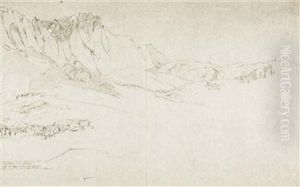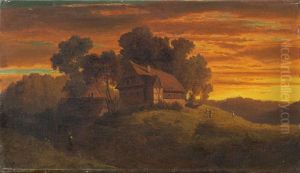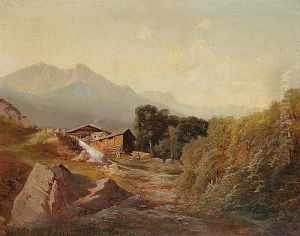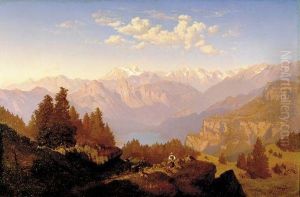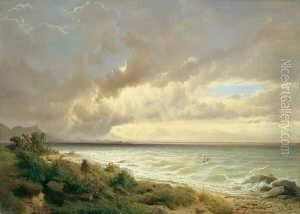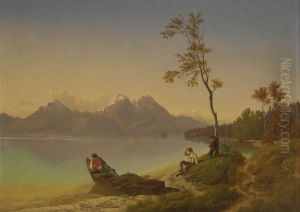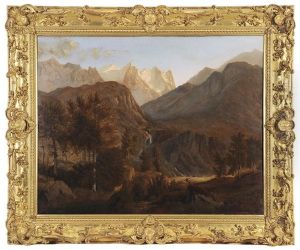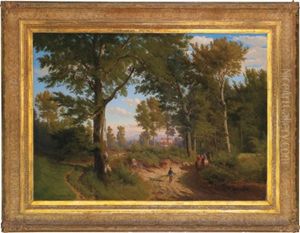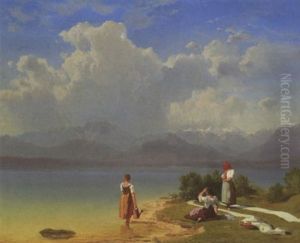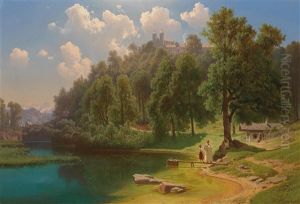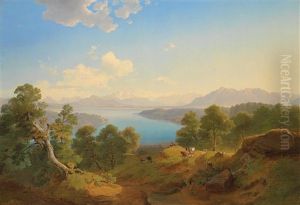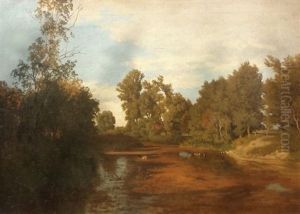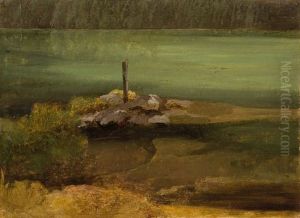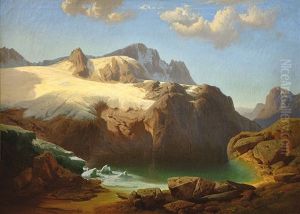Maximilian Haushofer Paintings
Maximilian Haushofer was a German landscape painter and professor, born on March 15, 1840, in Munich, Germany. He was a prominent figure in the 19th-century German art scene, known for his atmospheric landscapes that often depicted the Bavarian Alps. Haushofer's work is characterized by a meticulous attention to detail and a profound appreciation for the natural world, which he captured with a romantic sensibility.
Haushofer's education in art began at the Munich Academy of Fine Arts, where he studied under some of the most respected artists of his time, including Carl Theodor von Piloty. His talent and dedication to his craft were evident from the outset of his career, leading to early recognition and success.
Throughout his life, Haushofer remained deeply connected to his Bavarian roots, which greatly influenced his artistic output. He was fascinated by the changing seasons, the play of light across landscapes, and the dramatic vistas of the Alps. These elements became recurrent themes in his paintings, earning him a reputation as a master of landscape painting.
In addition to his painting career, Maximilian Haushofer was also a respected educator. He served as a professor at the Munich Academy of Fine Arts, where he influenced a new generation of artists with his teachings and philosophies on art. His approach to teaching was both rigorous and inspiring, emphasizing the importance of direct observation of nature and the development of a personal style.
Haushofer's contributions to the art world were recognized with numerous awards throughout his lifetime. His works were exhibited widely, both in Germany and internationally, and they continue to be celebrated for their beauty and emotional depth.
Maximilian Haushofer passed away on February 21, 1907, in Munich. His legacy lives on through his breathtaking landscapes, which capture the essence of the Bavarian wilderness with a timeless elegance. Today, his paintings can be found in museums and private collections around the world, testament to his enduring appeal and significance in the history of art.


